Jotbot AI: The Best AI Assistant for Writers and Researchers? [2025]
Editorial Note: We earn a commission from partner links. Commissions do not affect our editors' opinions or evaluations.
Updated December 13, 2024
Published June 7, 2024
![Jotbot AI: The Best AI Assistant for Writers and Researchers? [2025]](https://cdn.sanity.io/images/isy356iq/production/3056b3b8ecb28abeca489236b7458562078b1810-1200x800.jpg?h=260)
Our Verdict
Our overall experience with Jotbot was positive. But there are a few things we’d like to see improve. The AI certainly provides a decent first draft as a starting point. This is especially true for short-form content, but longer articles may require significant editing before you’re ready to publish.
On the plus side, Jotbot lets you upload sources to reference. This drastically improves the quality of the generated content. Additionally, AI-assisted editing helps speed things along.
We rated Jotbot AI 4.5/5 for its trainability, ability to mimic your writing style, and research assistance to help you find sources and cite your work. Although some features like generating notes from videos didn’t work as expected, Jotbot is still worth checking out and possibly adding to your writing arsenal.
Best For
Generating text content with AI using uploaded documents
Price
Start at $20/mo. or $14/mo. billed annually
Free Plan
Free-forever plan available
Pros
- Easy to use
- Generate text content quickly
- AI-assisted editing
- Research Assistance
- Affordable
Cons
- Not the best for long-form content
- Limited variation
Ease of Use
4.5
Accuracy
4.5
Speed
4.5
Price
4.6
What is Jotbot AI?
Jotbot AI is an AI-powered writing assistant designed to help streamline the writing process. The AI helps with generating content ideas, outlines, and text content. You can also upload previous writing samples and the AI will try to mimic your style.
Additionally, Jotbot is trainable. You can upload text such as documentation, research papers, and more to guide the AI on the content you want to create. The platform’s built-in research assistant helps you find sources for your content, which you can also use to train the AI to improve its output.
There’s a built-in document editor to help refine your text. The AI can paraphrase text, expand or summarize content, fix spelling and grammar, and more. You can also upload videos or add YouTube links to create notes from audio/video content.
Is Jotbot AI Right For You?
We recommend Jotbot for the following types of users:
- You want to generate short-form content that requires minimal editing
- You need help improving text with AI
- You want to generate bulk content cheaply
- You want a free writing assistant for one-off projects
- You need an AI you can train on specific information or writing style
However, Jotbot might not be the first choice for the following types of users:
- You’re primarily transcribing videos
- You need to generate images for your text content
- You regularly write long-form content
Pros & Cons of Jotbot AI
Pros
Easy to use
Jotbot sports an intuitive user interface. It’s forgiving for first-time users.
Generate text content quickly
The writing assistant lets you create text content quickly. You can write blog posts, emails, newsletters, and more in seconds.
AI-assisted editing
The built-in AI Document Editor can improve your text, check for grammar and spelling, paraphrase content, and more.
Research assistance
Jotbot has a research assistant to help you find reputable sources. You can also ask the assistant to create citations for your document in your preferred format.
Affordable
Jotbot is affordable, especially if you choose annual billing. The free-forever plan also gives you access to the platform’s core features and is sufficient for one-off projects.
Cons
Not the best for long-form content
The AI doesn’t write very good long-form content. You can tell it’s designed to write with you rather than for you. It handles shorter blog posts much better and the AI significantly improves existing content.
Limited variation
You may notice that the AI generates similar content when generating multiple articles with the same title or topic.
Getting Started With Jotbot AI
To use Jotbot AI, visit myjotbot.com and click “Start writing – it’s free.”

You can sign up directly with your Google account or provide an email to register for Jotbot.

Jotbot will ask a few onboarding questions to personalize the AI to your use case.
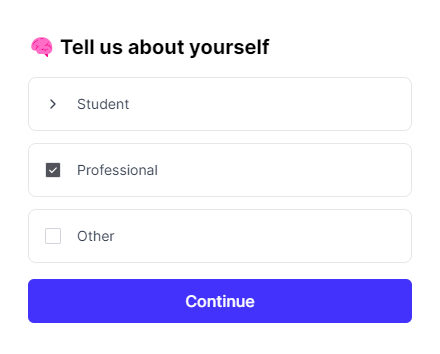
You’ll land on the Document Editor where you can start working on your first paper.
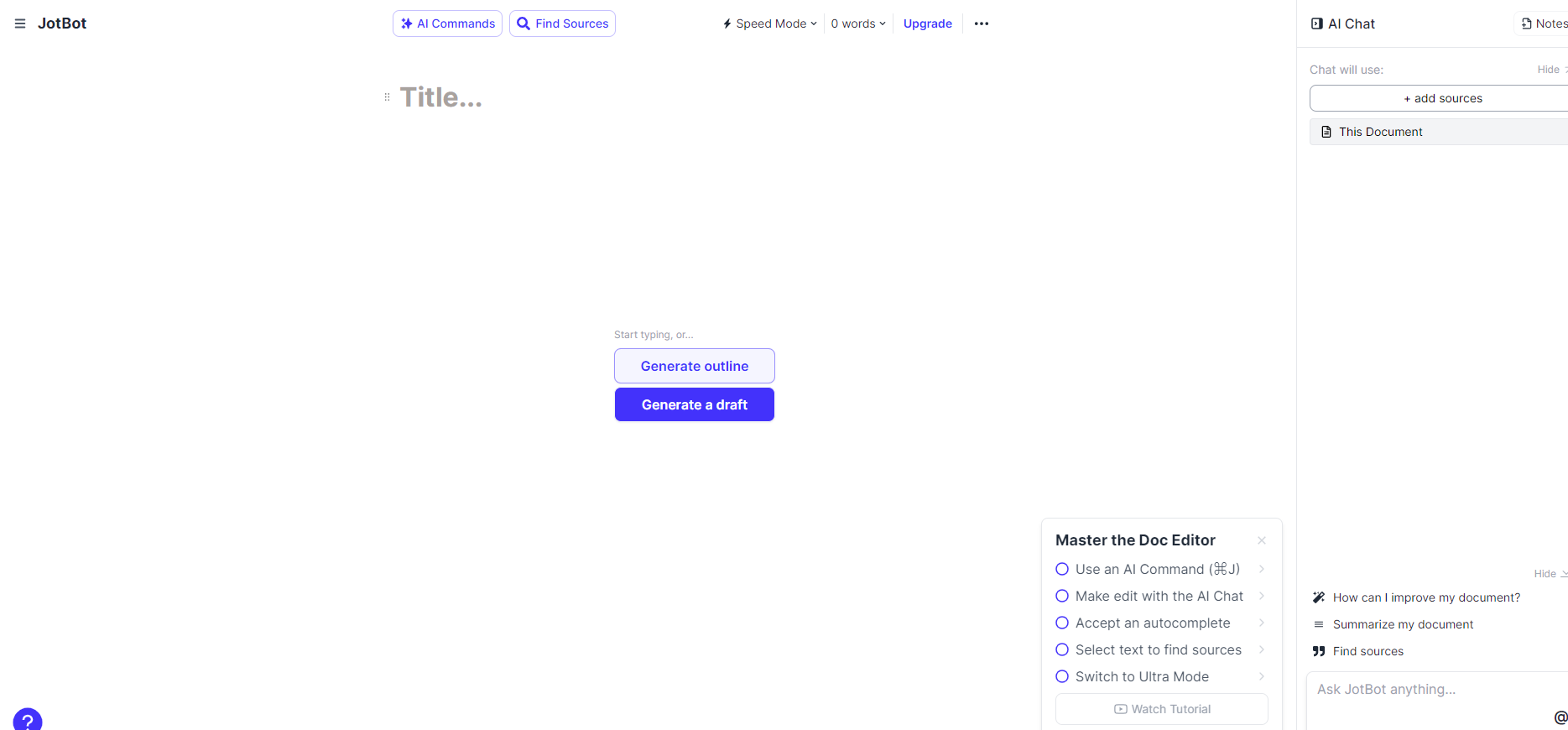
Let’s see what Jotbot has to offer!
Generate Text With AI
The Document Editor is Jotbot AI’s main feature. It lets you create documents from scratch using AI, including blog posts, articles, emails, and more.
We asked the AI to write a 2,000-word blog post about the pros and cons of AI technologies. Long-form content is a good yardstick for assessing an AI writing tool for accuracy, clarity, and coherence.
Feel free to check out the full unedited document that the AI created. It took only a few seconds to generate the draft.
First, the AI provided 931 words, not the 2,000-word blog post we requested. This immediately signaled that this writing assistant might not be designed for long-form content.
We weren’t wrong.
The writing wasn’t bad, but it had some hallmarks of AI-generated content.
The tone was formal throughout. And, although the language was polished and grammatically correct, we didn’t spot the stylistic variation and personal insights common with human-written content.
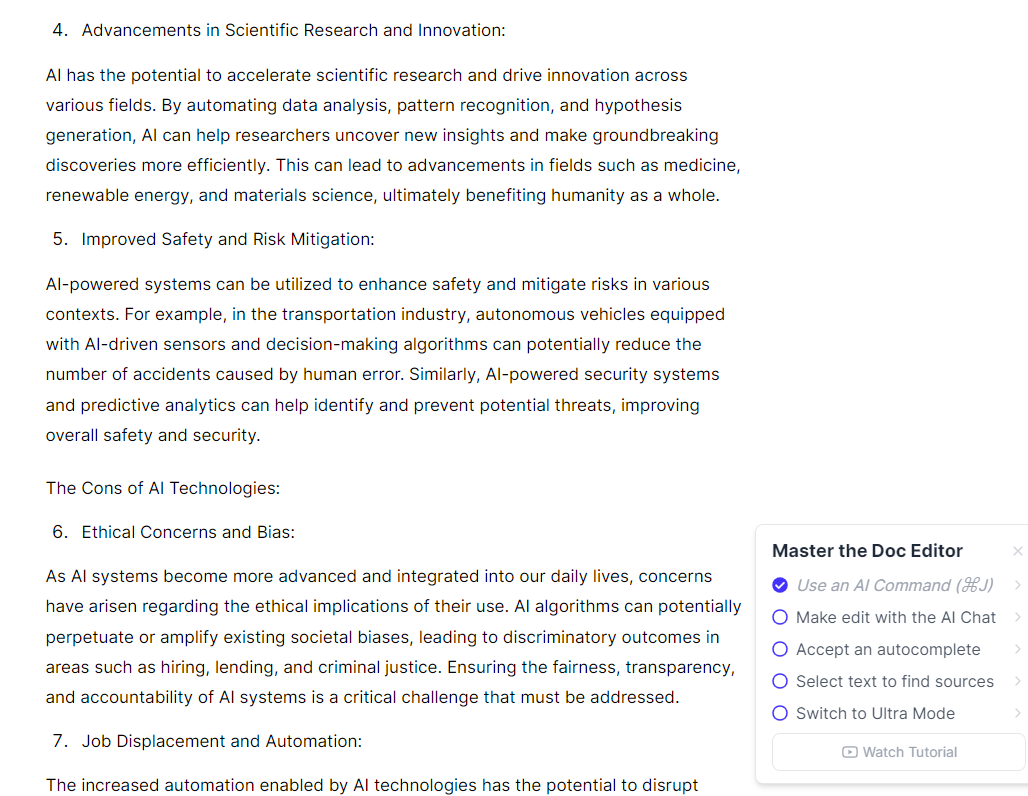
The AI also repeated some ideas in the text. Repetition and redundancy are typical signs of AI-generated content.
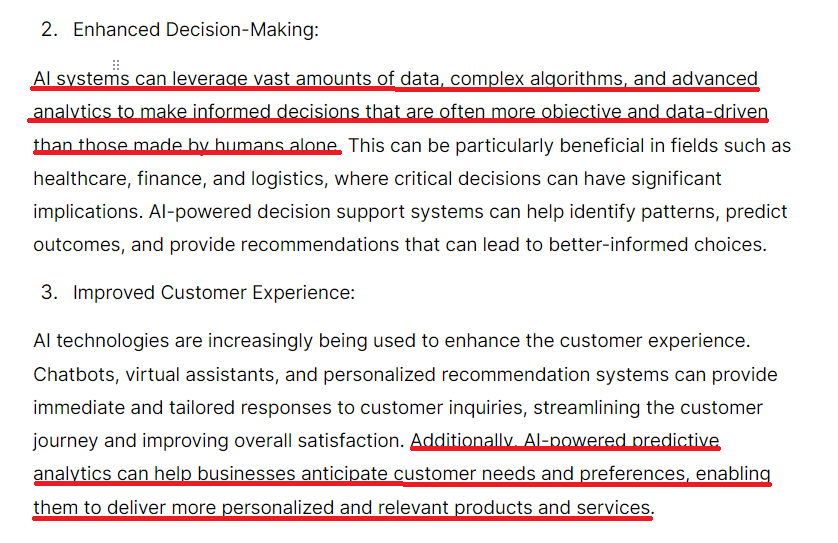
We also ran the article through an AI detection tool. The post failed the test, which is something to consider if your content needs to pass AI detection.
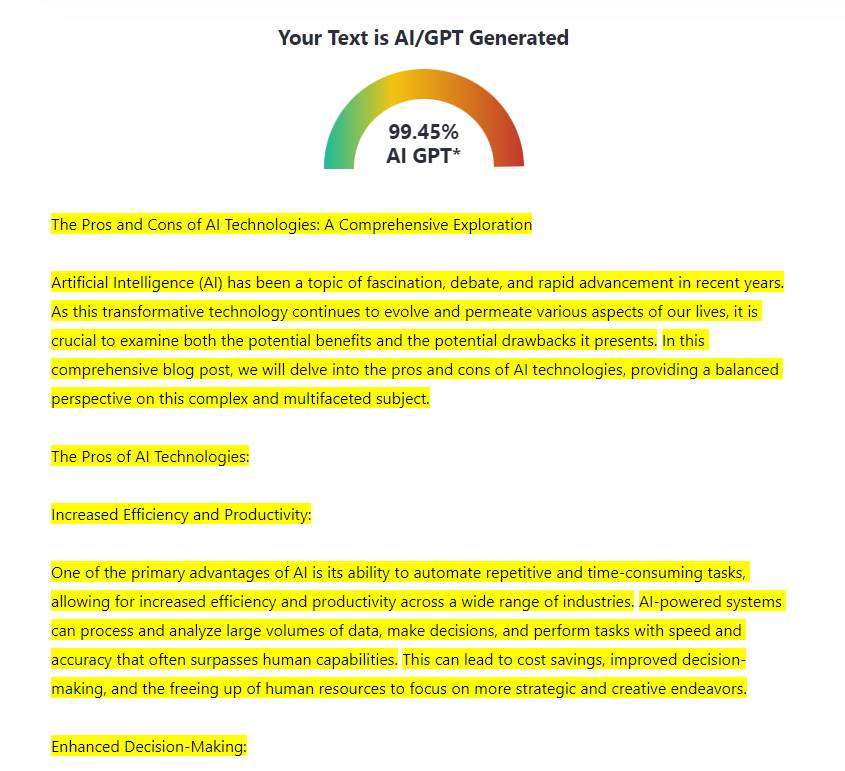
It’s worth mentioning that this isn’t a direct criticism of Jotbot AI. Generative AI technology isn’t to a point where it replaces human writers. You need to edit the generated text, including spotting redundancies and adding a human touch with personal insights anecdotes, and unique opinions.
But, as a first draft, Jotbot delivered a good enough article that we could adjust and edit before publishing.
We had better luck generating short-form content with Jotbot. We asked the AI to write a 500-word article on the same topic. The writing was far better, and the AI met the specified word count (518 words).
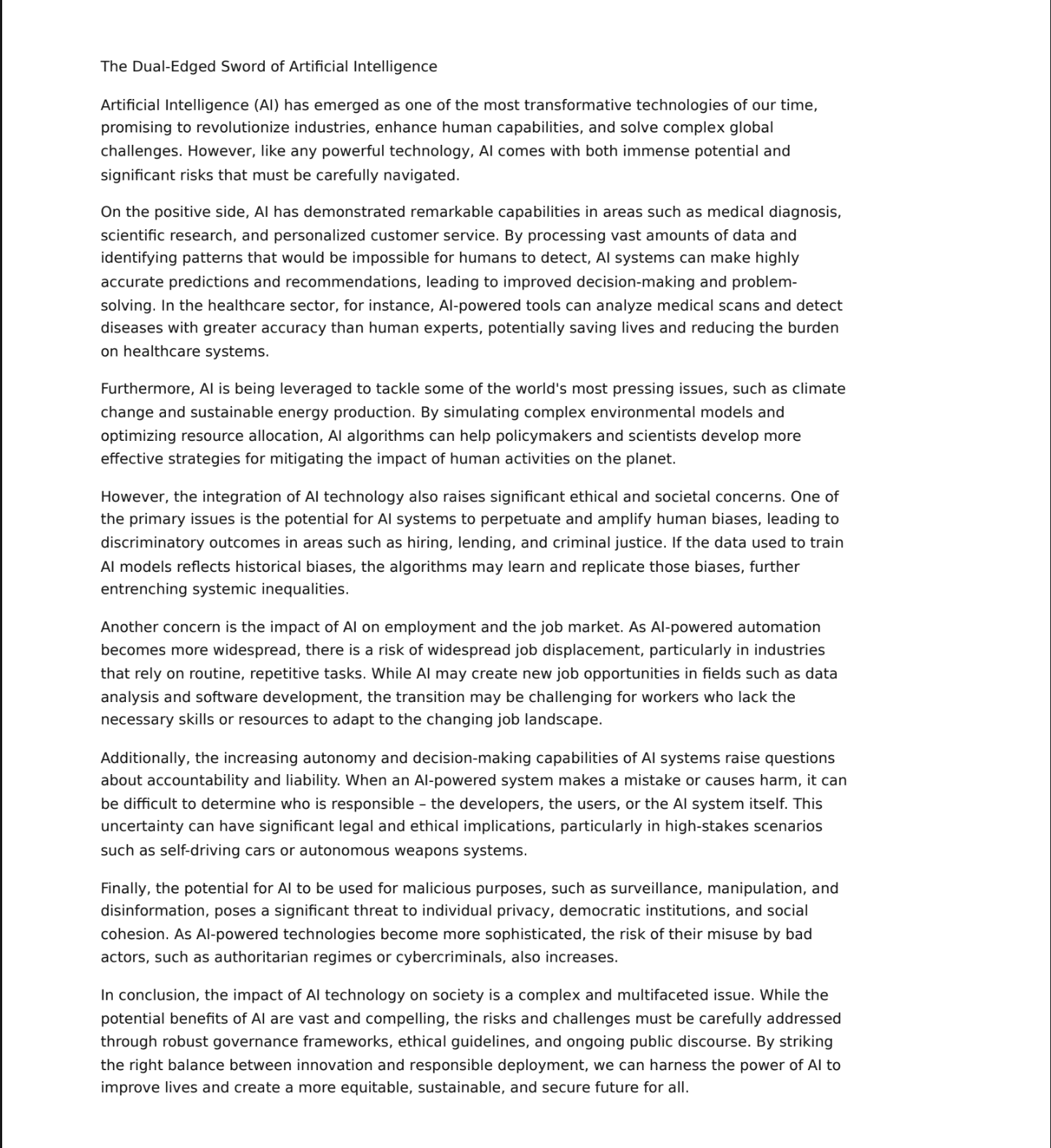
We noted a more varied sentence structure and an engaging discussion of our topic. The shorter article was significantly better than the previous attempt.

It’s also great that you can upload your previous articles and the AI will attempt to mimic your writing style. For this test, we generated text with a distinct style using ChatGPT. This would make it easy to see if Jotbot captured our unique style.

We didn’t see any evidence that the AI captured our writing style. The article read much like the previous outputs. Even the content and tone were similar to previous articles with the same topic/title, which raises concerns about Jotbot’s ability to generate unique content.

Keep in mind that the generated text might be generic. Consider alternative generation methods (like adding context) when creating content for certain audiences, including professionals and thought leaders.
Overall, though, Jotbot does a decent job generating text from a prompt. You’ll need to edit the text before publishing. Still, it’s much easier than writing the text from scratch, especially if you need inspiration.
AI Text Editor
We’ve talked about the importance of editing AI-generated text. Fortunately, this is something that the AI can help you with. Jotbot can expand, paraphrase, and find sources for text with AI.
Simply highlight the text you want to alter and enter your prompt in the chatbot on the right.
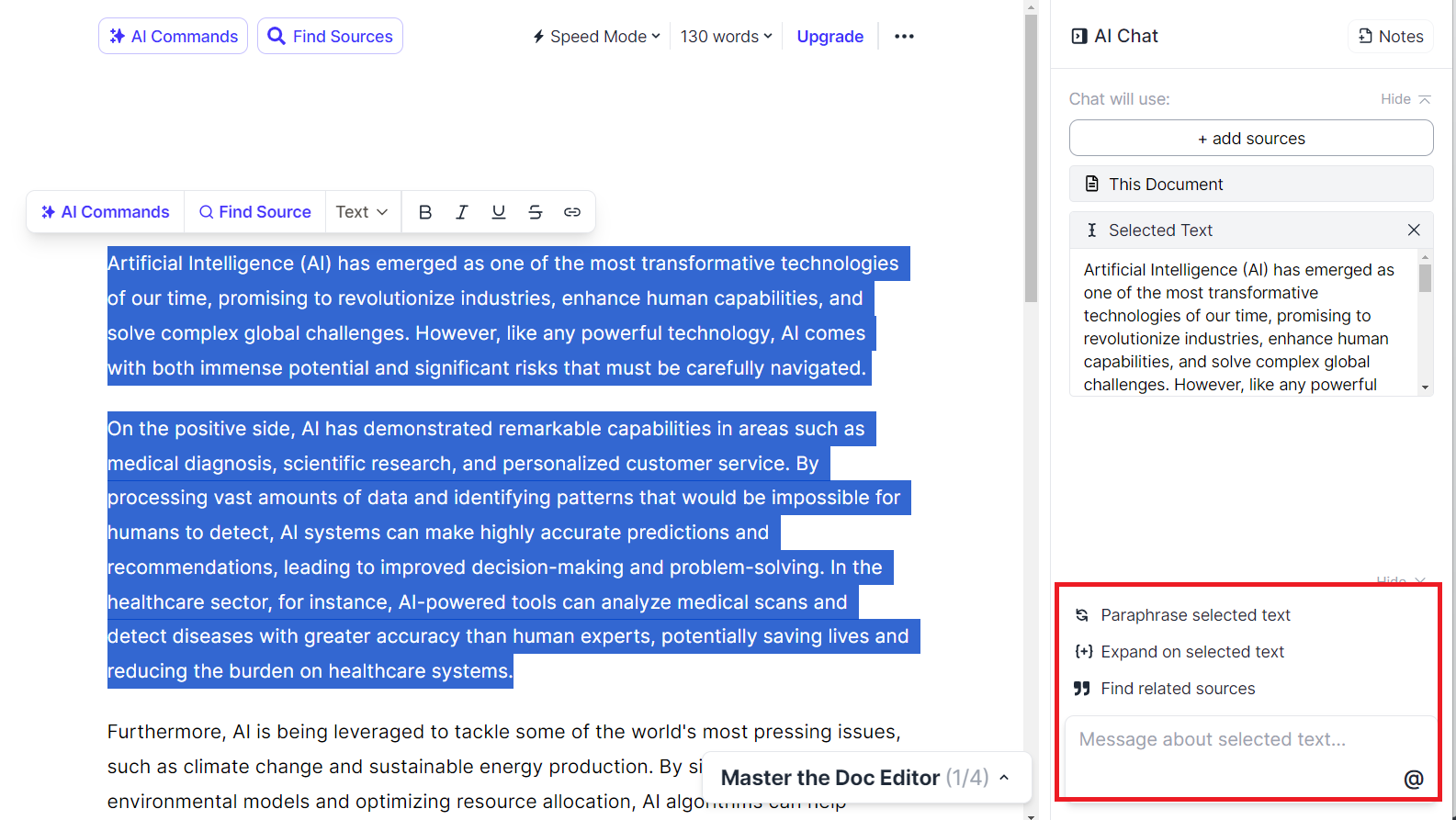
There’s also a command bar that you can use to make text longer or shorter, fix spelling and grammar, improve text, and more.
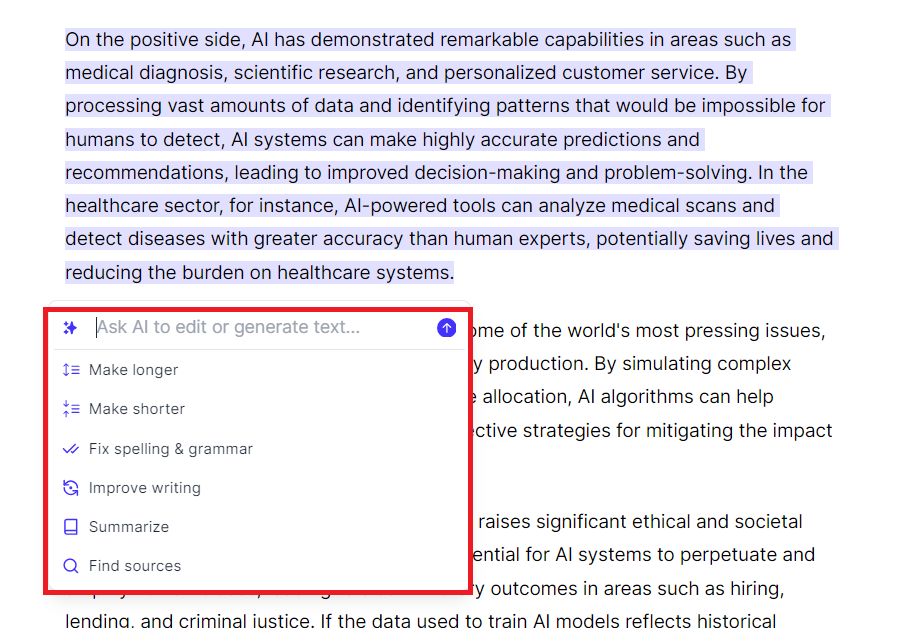
We asked the AI assistant to shorten this piece of text.

The AI did a decent job shortening the text from 84 to 68 words. It didn’t sacrifice the core content and meaning of the original text. Instead, the AI removed redundant and non-essential phrases, showing a strong contextual understanding of our text.

We deliberately introduced errors in our text and asked the AI to fix spelling and grammar.
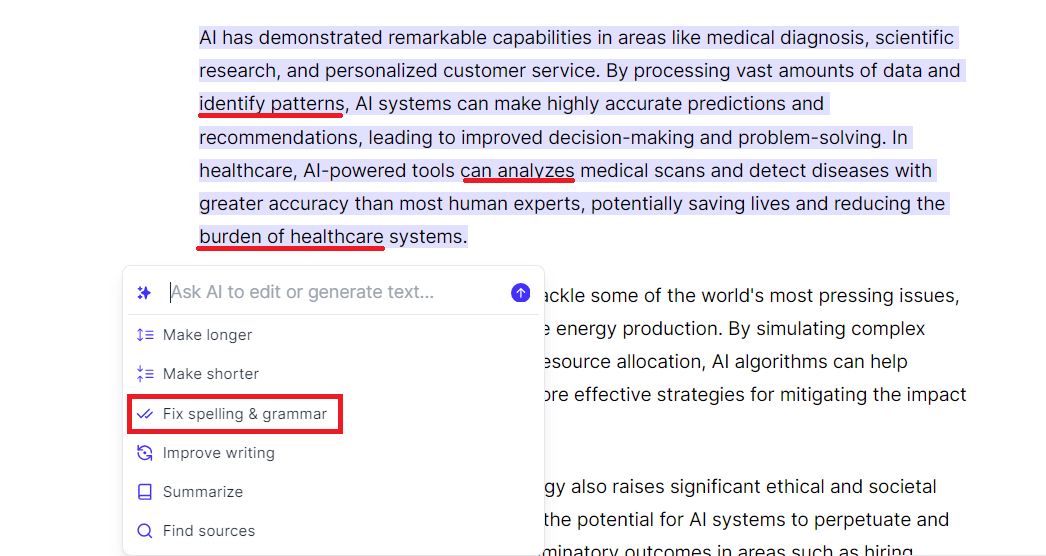
The AI identified and fixed all the mistakes successfully. There were five errors, including missing commas, wrong verb usage, and redundancy. We were happy that the AI didn’t miss any of the mistakes.

We also liked that you can use the AI to find sources. You can add these sources to the chat assistant. This allows Jotbot to reference these sources when generating new content–training the AI on the content you want to create.
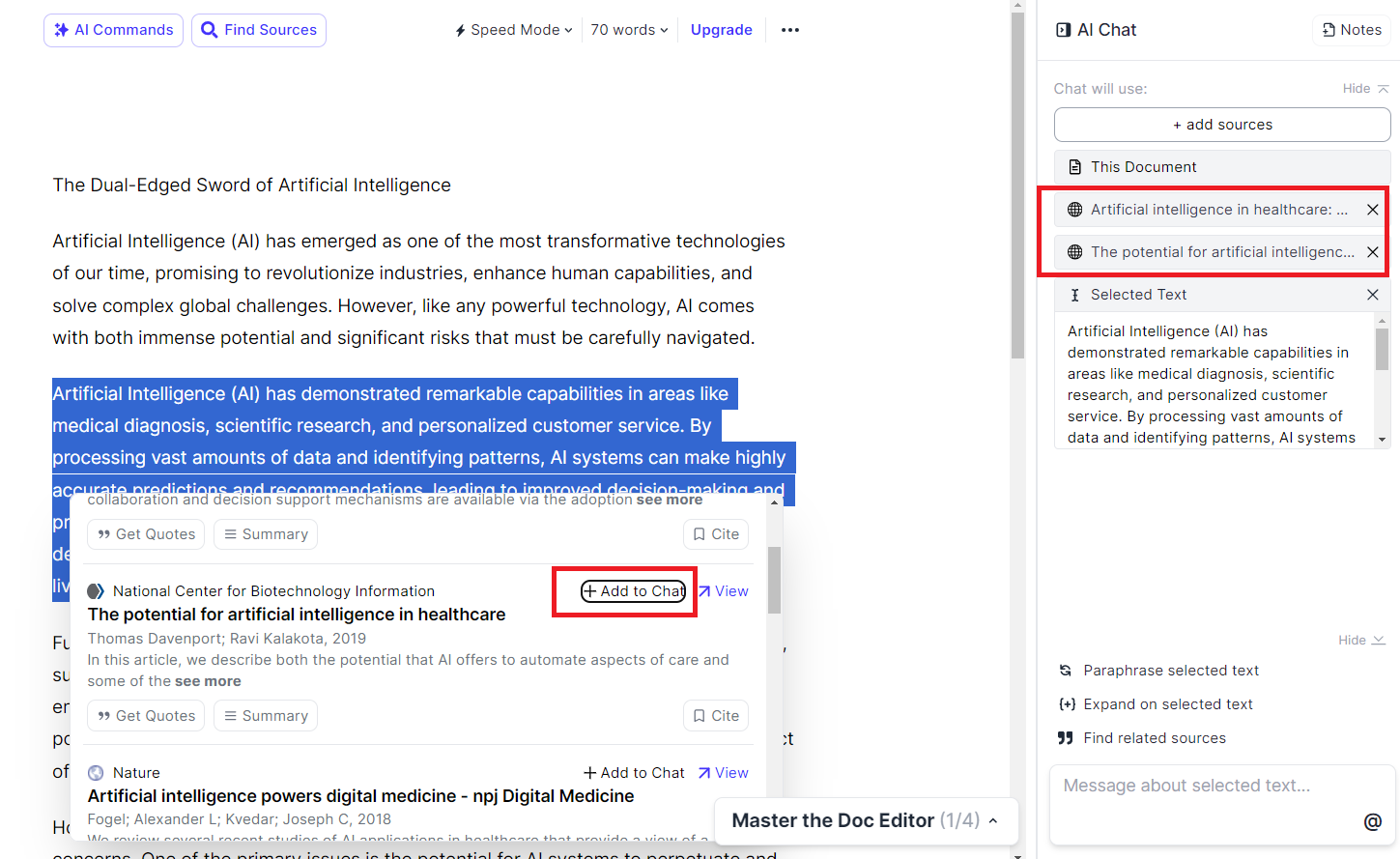
That’s exactly what we did. We asked Jotbot to find sources for a specific paragraph of the generated content. We then used the sources to train the AI.
Ideally, this would allow us to go from generic AI-generated text to personalized, highly specific, and contextually rich text with minimal effort.
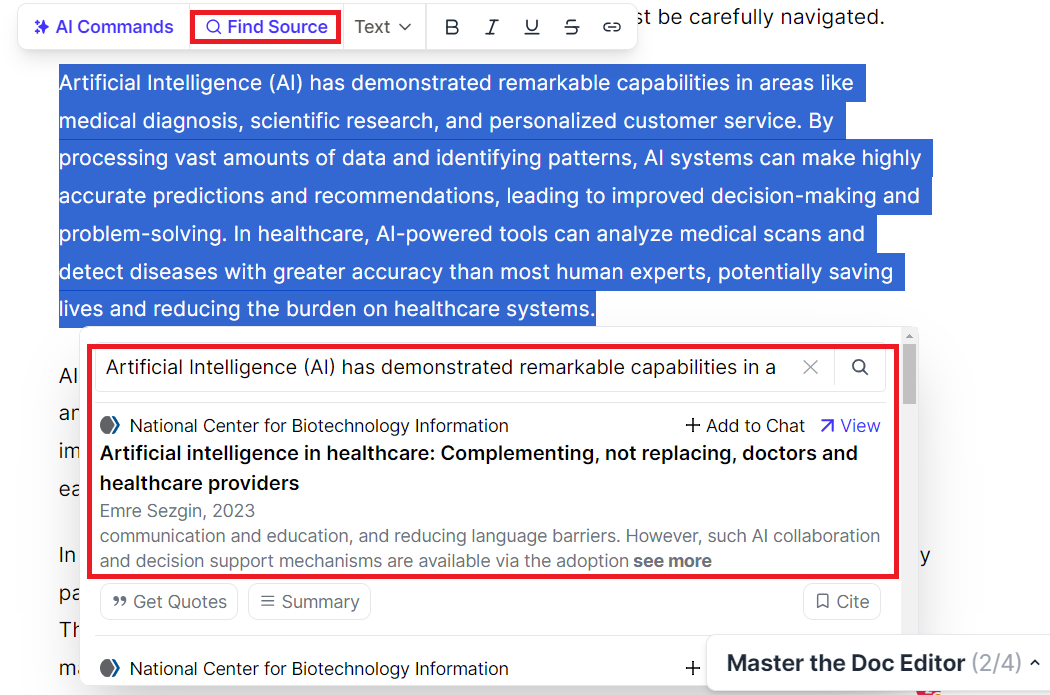
The result exceeded our expectations. The expanded text added specific examples and additional information. It also maintained the core message, showing an ability to reference sources and generate coherent and informative content relevant to the initial text.

We also noticed that the AI found high-quality and authoritative sources. These included publications from the National Center for Biotechnology Information.
It’s easy to see how Jotbot can be a powerful ally for strengthening your writing as long as you don’t stick with generating articles from just ideas or topics. Going the extra mile to find sources, or adding your own, makes all the difference to the generated content quality.
Finally, you can ask the chat to cite your sources in your preferred format. This feature wraps things up nicely by eliminating a repetitive manual task. It’s also useful for someone who doesn’t know how to cite articles in MLA or other formats.

The AI Editor makes up for any failings in Jotbot’s generative capabilities. You still need human editing. However, the AI assistant speeds things up, allowing you to easily expand or summarize content, find reliable sources, and more.
It’s a well-developed feature, and we have one complaint based on our test results. We wish the AI successfully replicated our writing style based on our sample content.
Notes
Jotbot lets you automatically create notes from your uploaded videos. You can also paste YouTube links to generate notes. There’s the option to generate notes from a live recording using your computer’s microphone.
It’s a useful feature if you need to create study notes from lectures or summarize meetings.
Jotbot lets you create context by adding a prompt to help the AI deliver the desired outcome.
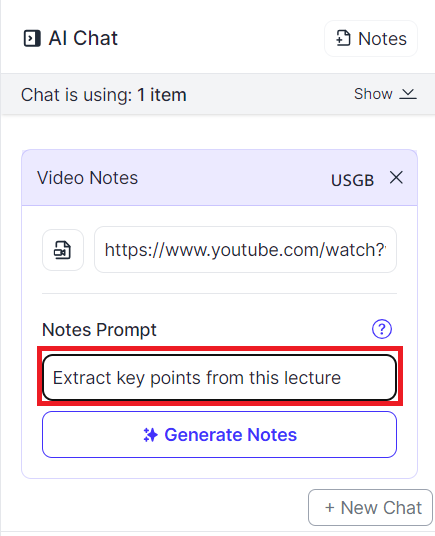
We added a YouTube link and asked the AI to extract key points from the lecture. However, the AI didn’t deliver what we asked for. Instead, we got a transcript, which appeared as a wall of text in the right panel.
The AI also included filler words throughout the transcript, making it even harder to navigate the text.
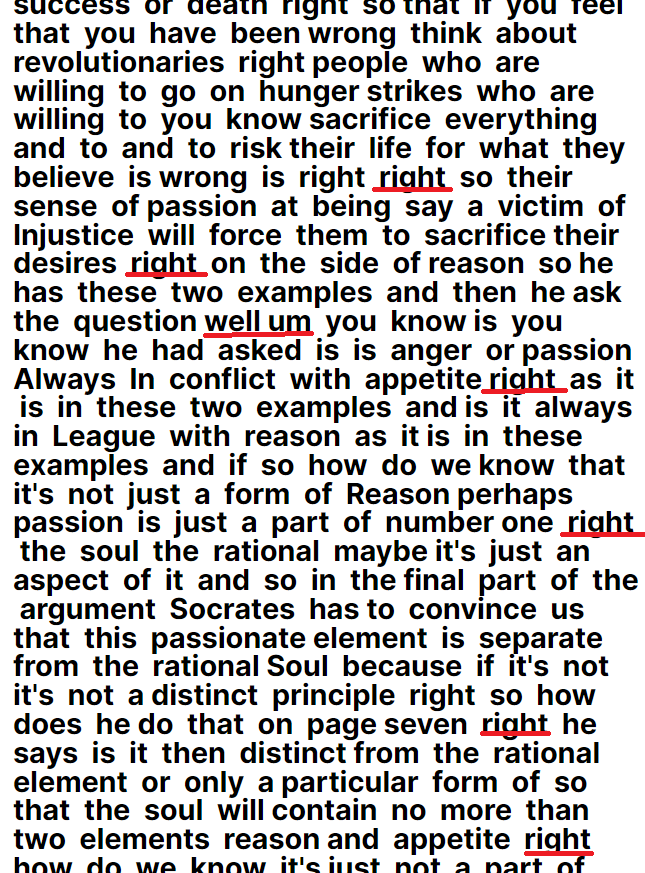
We understand that Jotbot isn’t a stand-alone transcription tool and we shouldn’t expect it to work like one. But, simple formatting like adding punctuation at the end of sentences should be obvious.
The AI also misspelled a few words in the transcript, but the text was mostly accurate. The AI delivered the transcript in just a few seconds, so we’ll give a few points for speed.
Since we didn’t get the notes we asked for right off the bat, we asked the chat assistant to give us the main points from the transcript.
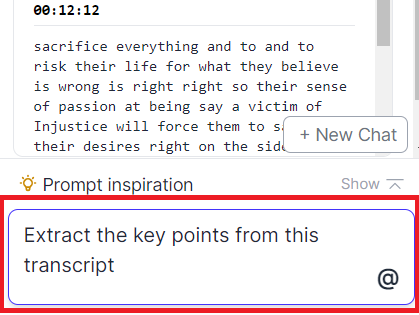
This time the AI did a good job extracting the key points from the transcript. The AI could have elaborated some points, like the “Thirsty Man” reference. However, these would make great supplementary study notes, or provide an overview of the lecture before watching it.
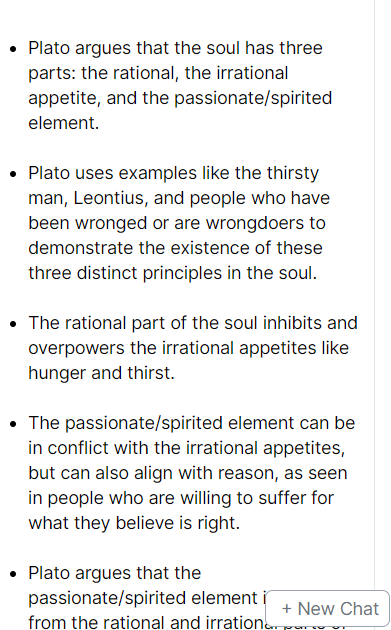
We were equally curious about how Jotbot would handle multiple speakers. We used a video interview with two speakers for this test.
Again, the transcript was accurate. Plus the AI provided a complete interview transcript, up to the last second.
However, the AI didn’t separate the speakers. It again provided a block of text that we’d have to identify speakers manually. The AI also didn’t add punctuation to the transcript this time either.
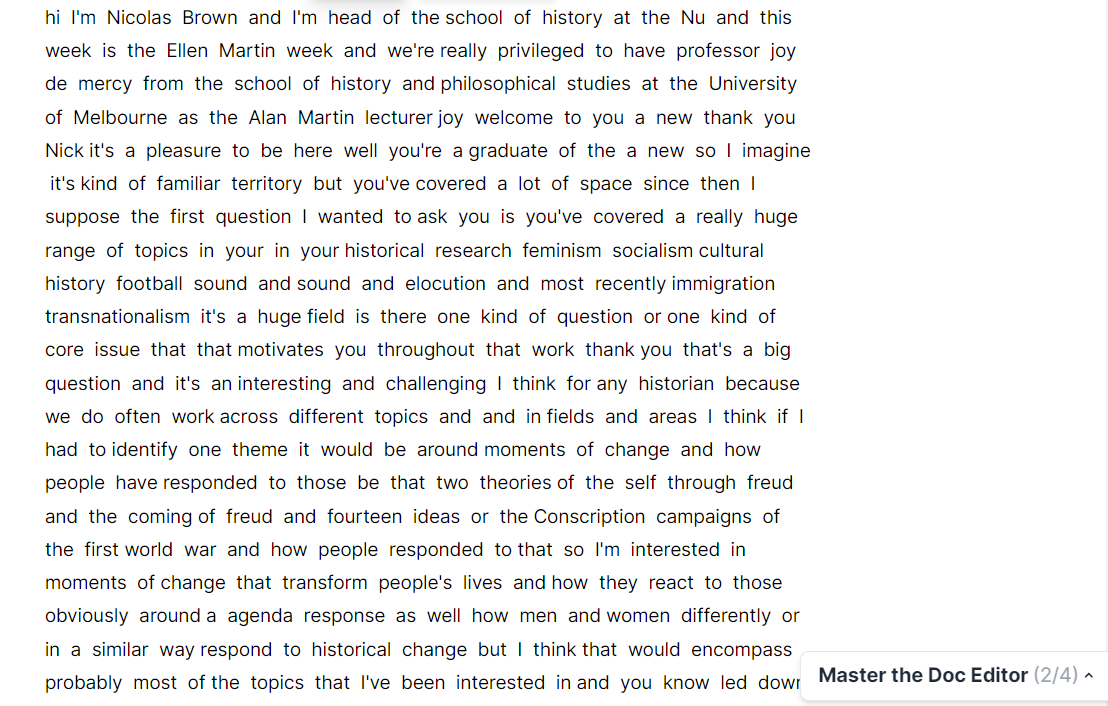
It would take some time to clean up the text wall so it’s usable for studying or repurposing. We’d have preferred if Jotbot did it for us since this technology is common with transcription tools.
We also asked the AI to identify the key points in the interview. Overall, we were happy with what the AI provided. It showed a good contextual understanding of the video content. We especially liked that the notes focused on the interviewee and not the interviewer.
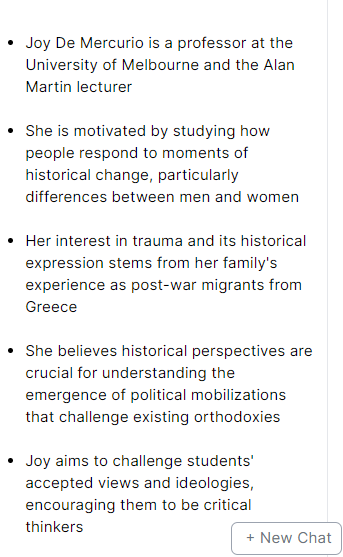
The notes feature could be made better. There’s potential here, considering that the transcripts are 99.8% accurate with a few minor errors. However, you’d need to prompt the AI multiple times to get in-depth and usable notes.
The transcripts also aren’t formatted properly, making them difficult to work with. We’d recommend using a dedicated transcription tool instead if you’re mostly interested in speech-to-text capabilities.
Pricing
Jotbot has two pricing plans, including a free-forever plan.
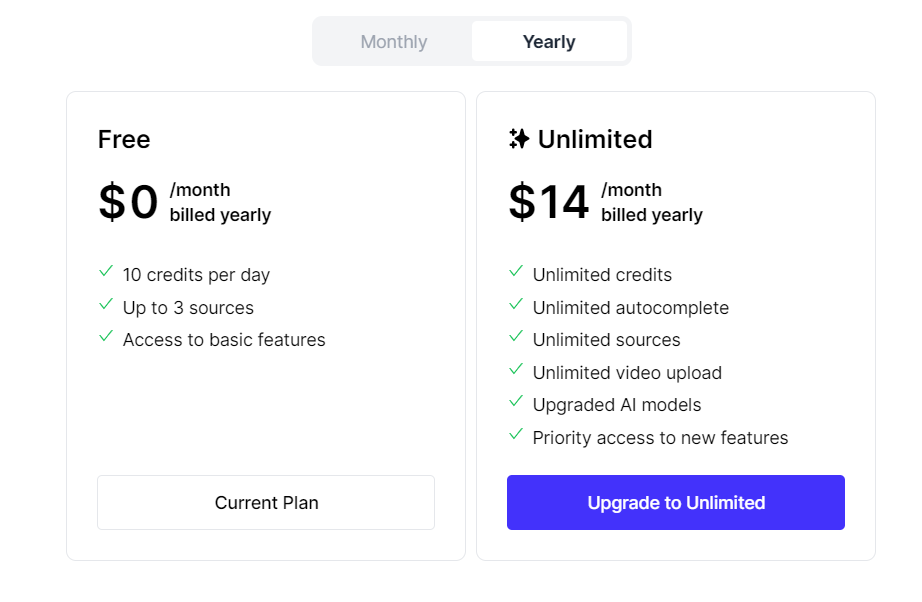
The Free plan gives you ten credits daily to use the platform’s generative AI. Most tasks use one credit. You can also upload three sources and access basic features.
The Unlimited plan costs $20 per month billed monthly or $14 per month billed annually. The plan lifts all usage limits, so you’re only paying the base price without worrying about running out of credits before the end of the month.
We like Jotbot’s straightforward pricing. The Unlimited plan is especially attractive to people who need to generate bulk content without worrying about credit usage.
Closing Notes On Jotbot AI
Jotbot isn’t perfect, but it’s worth considering seriously, including trying out the free plan before making a final decision. It is particularly useful if you have documents that you can upload to train the AI on the desired content.
It’s also more convenient to use than ChatGPT. The platform has a built-in document editor, so you don’t have to switch back and forth between the AI and your work area. We hope that Jotbot will iron out some of the issues like the unformatted transcripts and the AI’s inability to mimic writing styles, and we’d have no reservations about recommending this tool.
Frequently Asked Questions
Share This Post
Ada Rivers
Ada Rivers is a senior writer and marketer with a Master’s in Global Marketing. She enjoys helping businesses reach their audience. In her free time, she likes hiking, cooking, and practicing yoga.
Allow cookies
This website uses cookies to enhance the user experience and for essential analytics purposes. By continuing to use the site, you agree to our use of cookies.

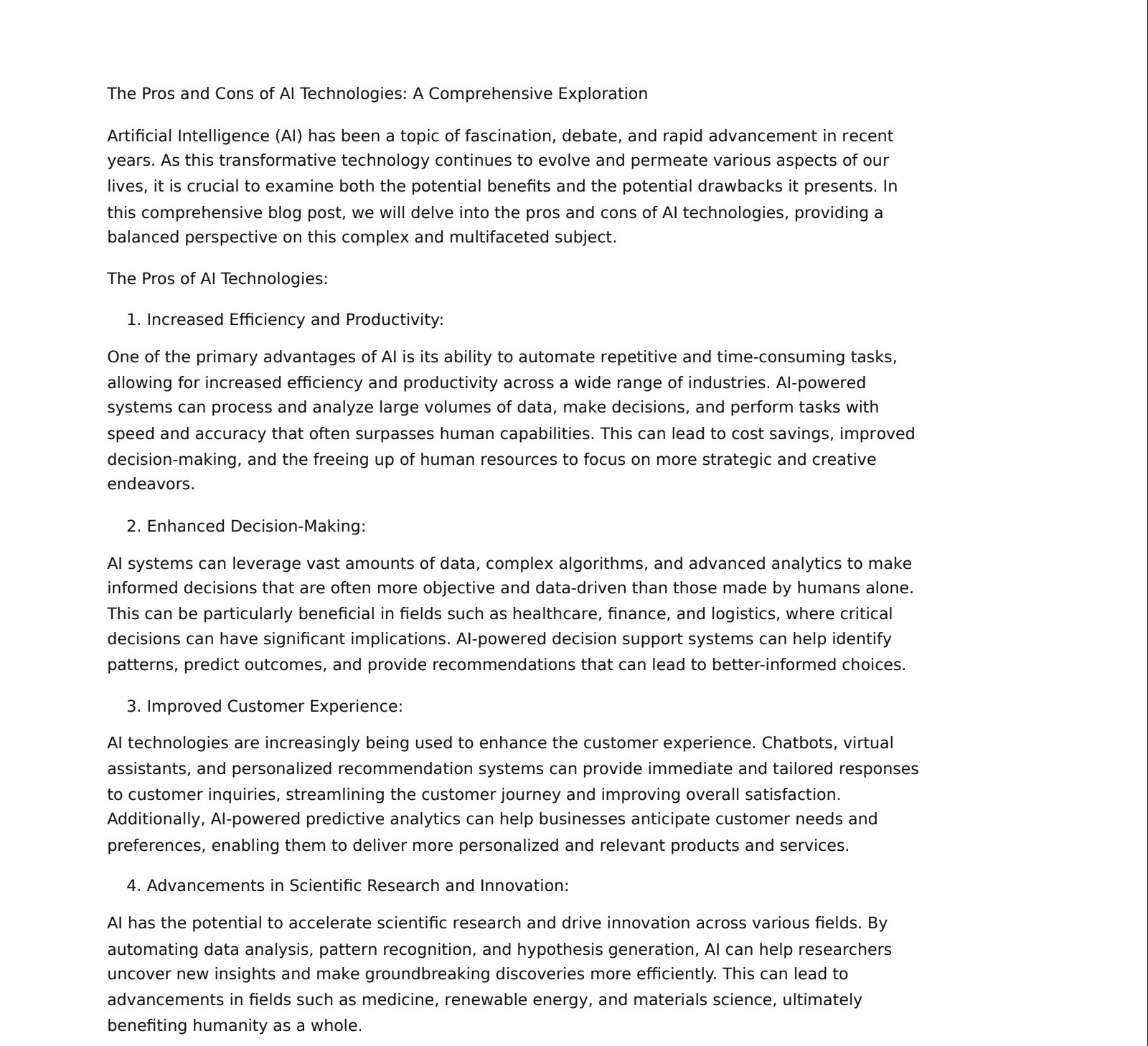
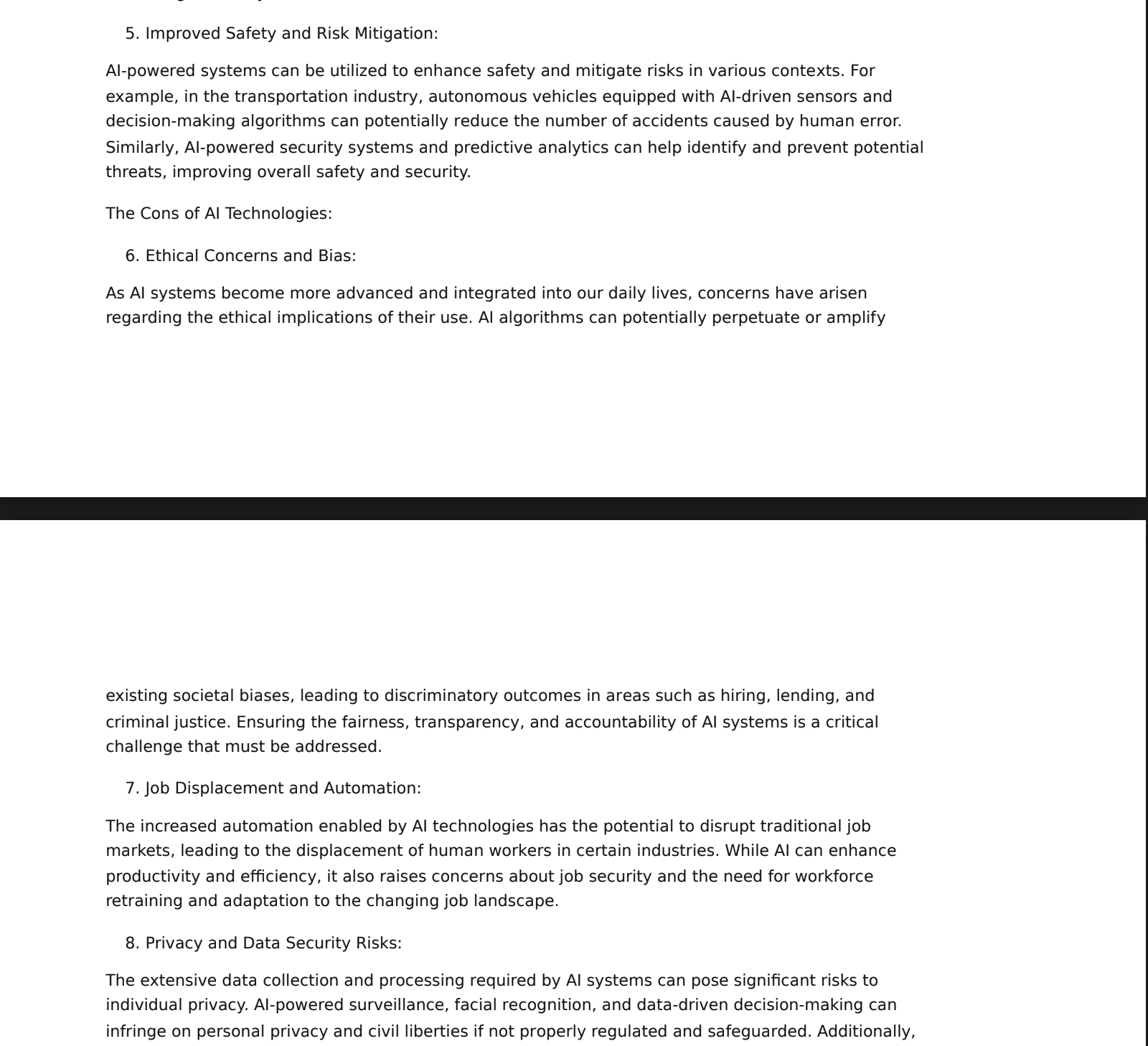




![Hypotenuse AI: The AI Content Writer Can Truly Write in Your Voice? [2025]](https://cdn.sanity.io/images/isy356iq/production/db00ce44b7f69c17369281695d40e44264eda853-1200x800.jpg?h=200)

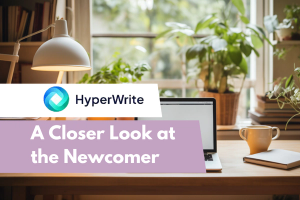






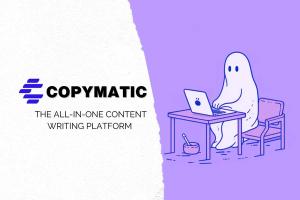

![NovelAI: What is It and a Detailed Review [2023]](https://cdn.sanity.io/images/isy356iq/production/dbfdfdfce7eabc0a4af4148508cbc8871859779e-1200x800.jpg?h=200)
![Writesonic: What is It and a Detailed Review [2025]](https://cdn.sanity.io/images/isy356iq/production/844eba596ba3b4d503bcbf691166bfc868fc495d-1200x800.png?h=200)
![Wordtune: What is It and a Detailed Review [2023]](https://cdn.sanity.io/images/isy356iq/production/eab0cd6cf9ef3b7e9fee29d61d70c2da11ed7bea-1200x800.png?h=200)